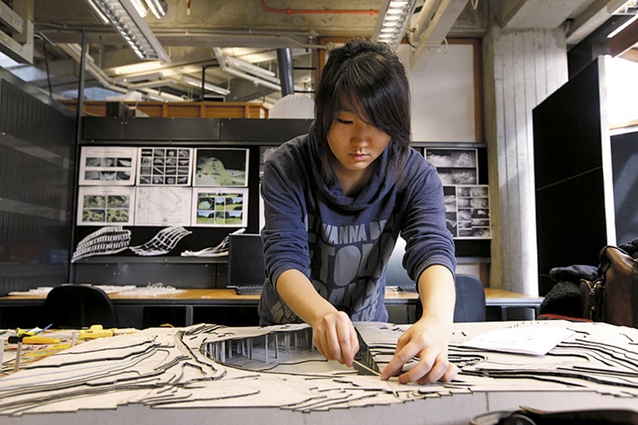Architecture + Women in New Zealand
The 1993 November/December issue of Architecture NZ included a section titled “Women in Architecture.” At the date of publication, women had been practising architecture in New Zealand for sixty years, and the magazine committed several pages to a selection of successful women practising architecture at the time.
The magazine also reviewed the successful exhibitions Constructive Agenda – 60 Years of Women in Architecture in New Zealand, held in Wellington and Auckland. The exhibitions invited submissions from all women involved in architecture in New Zealand, including students, graduates, and practising and retired architects. Readers responded enthusiastically, and submissions were received from all over the country and overseas. At the conclusion of these two main exhibitions, a single combined exhibition toured the regional branches of the NZIA.
At the time of compiling the exhibition for tour, organisers contacted NZIA branches to poll their support for hosting the now-combined exhibition1 and were surprised to note that several branches had no female members. These branches concluded that the exhibition therefore held no value for them or their district.
Gender in architecture was the subject of academic discussion in the 1980s and early 90s as part of a wider feminist movement within the schools of architecture and other university departments. (Schools of architecture offered two courses: “Women and Architecture” and “Engendering Architecture.” The arts department ran several gender studies courses in English and Cultural Studies.) Despite the increase in the number of women graduates since this time,2 the visibility of women in the profession remains low. Professor Errol Haarhoff’s recent research,3 which tracks graduates from the three New Zealand schools of architecture, has revealed a lack of data on what happens to women following graduation.
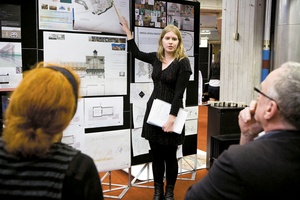
Architecture + Women 2013
In 2013, twenty years on from the Constructive Agenda exhibition, an Architecture + Women exhibition will be held. This is an opportunity to re-evaluate the situation of women in the architecture profession. The year 2013 also marks the 120-year anniversary of the New Zealand suffrage movement, as well as marking the eightieth anniversary of the first female to graduate with a bachelor of architecture degree, Merle Greenwood.
The proposed 2013 A+W exhibition asks “where do the many women graduates of architecture go?” The resulting exhibition will be a visual representation of as many women as possible involved with architecture in New Zealand. It is also intended that the exhibition will explore how women work in architecture, twenty years on from the original exhibition. To coincide with the 2011 Auckland Architecture Week during September and October, the A+W website will be launched. The purpose of this website is to provide a current and growing database of women in architecture in New Zealand, which will lead into the 2013 exhibition. This is, then, a call for all women trained and educated in architecture, associated with New Zealand, to upload their details to the new website at www.architecturewomen.org.nz.
We aim to include the many and varied methods of operating within the architectural field, as well as the experiences of those who are or permanently outside of the profession. Those who have trained overseas and are working in this country are asked to upload their information, as are those who have ceased practising to raise a family or work in another field. The aim is to compile a more complete picture of the whole of the architectural community, including those who remain hidden from the profession.
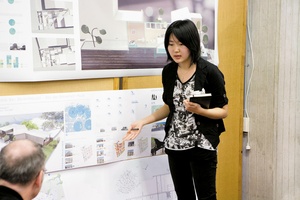
The New Zealand Context
From an early-twenty-first-century viewpoint, there appears to be little need to distinguish between minority and majority groups involved in architecture – after all, almost 60 percent of first-year architecture students are women and it is possible to watch a quality thirteen-part documentary series celebrating Maori architecture on the Maori TV channel. However, questions about gender and diversity continue to emerge in the media, and the persistent 12 percent remuneration gap between the genders keeps these inequity questions alive. Is this a revival of the feminist ideologies of the 1980s, or is there a shift in awareness? Perhaps we as a profession are reconsidering the assumption that it would be easy to redress the absence of women (and other nonmainstream groups) from the records of the profession. Much has changed in recent decades: the profession is certainly more inclusive than it was in 1993, when the last exhibition was held. It is these positive changes we wish to celebrate with the 2013 exhibition.
There are many career paths available to graduate architects – both male and female. Due to the additional negotiations that women generallyface during their architectural careers – including job satisfaction, career interruption and flexibility – they often form part of the group of architects who select “unconventional” career patterns. Whether this is due to the raising of children or other family commitments, the adaptability shown by women in order to balance work and life can be considered pioneering, and their experiences may be helpful to all graduates who are looking for ways to shape their professional life. The fact that women have, out of necessity, been rearranging the mainstream professional system to suit their own needs for decades can also be helpful to male architects who are negotiating their own relationship with a life in architecture. Tim Melville, in the July issue of Cross Section, has called for discussion on this very issue.
It has also been the topic of a recent Australian Institute of Architects conference in Sydney, and Naomi Stead is conducting a three-year research project on equity and diversity in the architectural profession in Australia at University of Queensland.
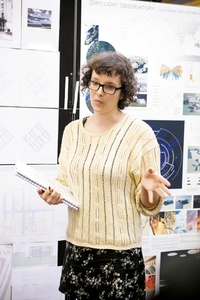
Gender issues on each side of the ditch
“How old are you? How do you do that and have three children? And where did you get your scarf?” This candid three-part question was put to Australian architect Camilla Block during a 2009 visit. The lecture she had just presented was stimulating and the work was inspiring, but how did this woman manage to have such a successful practice and raise a family?
As our post-lecture discussion progressed we were soon joined by several other female audience members expressing interest, admiration and frustration at the shared issues associated with practising architecture as a woman. It transpires that, across the ditch, we share many similar challenges.
The January/February 2010 issue of Architecture NZ features an interview with Block. The eight-page story presents projects of an impressive scale and delves into the harsh realities of the practice’s work, but it is toward the end of the interview that Block expands on her personal struggles as a woman in architecture.
“I think the real message is that it’s actually not possible to do this alone. I work as part of a team with other extraordinary people … That is what allows me to be away for short periods of time,” she explains. “Even so, women can feel inadequate … You sometimes feel like you’re not doing anything well.”
Block was refreshingly honest about the challenges of juggling an architecture practice and a private life. It is heartening to read such an account in print. The questions we discussed with Block spurred us establish Architecture + Women.
An expanded practice forum at the 2010 Australian Institute of Architects national conference expanded on these ideas, talking specifically about women, architecture and modes of practice. It proved to be a lively debate between the panel on stage and the audience. The panel included Dr Karen Burns, a PhD coordinator at Monash University; Justine Clark, former editor of Architecture Australia; Liza Fior, MUF partner; Ninotschka Titchkosky, principal at BVN Architecture; Hannah Tribe, principal at Tribe Studio; and Melinda Dodson, then president of the Australian Institute of Architects. The forum linked to the initiation of a cooperative research project seeking best-practice strategies for redressing the under representation of women at senior levels in the architecture profession. Funded via an Australian Research Council linkage grant, the project was being undertaken by five industry partners: the Australian Institute of Architects, Architecture Media and case study practices BVN Architecture, PTW Architects and Bates Smart Architects.
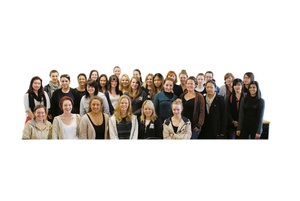
Looking Ahead
If there is an issue, then why is this not more widely acknowledged by those immersed in the profession? How is our industry and the profession changing or adapting to this evolving diversity? And how does this affect the value that an architect offers communities – not only in built outcomes but in the process, relationships and communication that achieves these outcomes? And what role can our own NZIA play in enhancing the involvement of women in the profession? Architecture + Women.
The Auckland exhibition team was led by Amanda Reynolds and Wellington coordinator Jane Dykes. In the 1980s Reynolds had instigated the creation of a “Women’s Institute of Architecture”; in 1993 she was a director at Hames Sharley; she is now in London leading her own urban design consultancy, Amanda Reynolds Urbanism.
Women currently make up 55.5% of the BAS and 61.5% of the March (Prof) at the Auckland School of Architecture and Planning. Professor Errol Haarhoff, “Practice and Gender in Architecture: A Survey of Recent Architecture Graduates 1987–2008,” 2010.
Architecture + Women is an initiative by Megan Rule, Lynda Simmons, Sarah Treadwell and Julie Wilson. We acknowledge the important work done before us by many women in architecture throughout generations/decades, in particular the 1993 Constructive Agenda Exhibition led by Amanda Reynolds and Jane Dykes.

